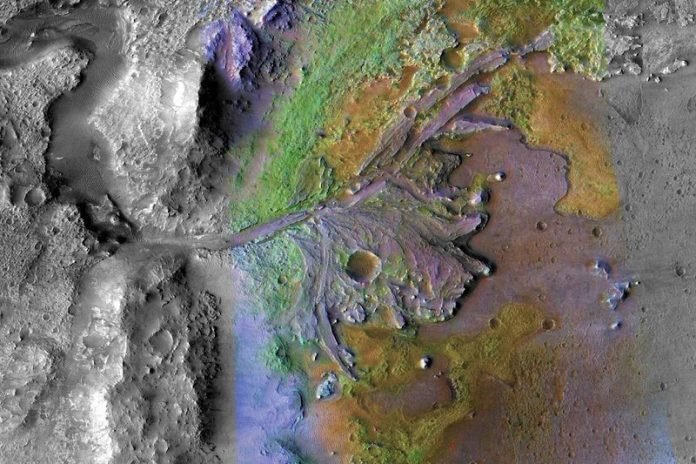
The search for life on alien worlds has captivated us for hundreds of years.
In some respect, the search for life has expanded to the search for water since it is not unreasonable to assume if there is water then there is a good chance there is life too.
When NASA selected the landing site for Perseverance, they were looking for such a body of water and settled upon the Jezero Crater.
Images from orbiters reveal a crater that looks like it has been filled with water in the past but further investigations were needed to confirm. Now it seems, Perseverance has risen to the challenge.
Perseverance is a car sized rover that arrived on Mars on 18 February 2021 and carried with it the innovative Ingenuity helicopter, the first powered aircraft on another world.
The main objective of the mission was to identify ancient Martian environments capable of supporting life and if possible, finding evidence of ancient microbial life through collecting rock and soil samples.
Since its arrival in 2021, the rover has been travelling around the 50km wide crater studying the geology and atmosphere as it goes.
A paper recently published in Science Advances journal declares that the crater was indeed filled at some point in its geological past, with water!
More that it has deposited layers of sediments on the floor of the crater which have gone through periods of erosion as the lake shrank but are now visible in space images of the region.
Although there have been nearly 3 years of operation on Mars, the really interesting stuff occurred between May and December 2022 when Perseverance drove from the crater floor onto the ancient river delta, a region believed to be 3 billion years old.
During its journey, Perseverance used RIMFAX (the Radar Imager for Mars’ Subsurface Experiment) to shoot radar signals into the ground every 10cm. The pulses reflected from depths of about 20metres from below the surface showing that the base of the sediment was here and they had located the top of the buried crater.
The data from RIMFAX showed sediment from two distinct periods bordered by periods of erosion as the environmental factors affected the sediments. The team reported that the original crater floor was not completely flat and that erosion must have taken place prior to the deposition of the sediments in the lake.
Despite the discovery of sediments, the team have yet to identify any fossilised remains or primitive life. The journey however has just begun. Over the last few decades we have found mounting evidence that water is common across the universe. It seems to that the processes we see on Earth are also common.
Perhaps then we may be permitted to assume that other processes are replicated across the Cosmos, perhaps those that lead to the evolution of life! Time will tell if this latter assumption plays out.
Written by Mark Thompson/Universe Today.



